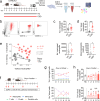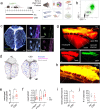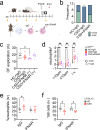This is a preprint.
Chronic social defeat stress induces meningeal neutrophilia via type I interferon signaling
- PMID: 39257811
- PMCID: PMC11383661
- DOI: 10.1101/2024.08.30.610447
Chronic social defeat stress induces meningeal neutrophilia via type I interferon signaling
Update in
-
Chronic social defeat stress induces meningeal neutrophilia via type I interferon signaling in male mice.Nat Commun. 2025 Sep 1;16(1):8153. doi: 10.1038/s41467-025-62840-5. Nat Commun. 2025. PMID: 40890098 Free PMC article.
Abstract
Animal models of stress and stress-related disorders are also associated with blood neutrophilia. The mechanistic relevance of this to symptoms or behavior is unclear. We used cytometry, immunohistochemistry, whole tissue clearing, and single-cell sequencing to characterize the meningeal immune response to chronic social defeat (CSD) stress in mice. We find that chronic, but not acute, stress causes meningeal neutrophil accumulation, and CSD increases neutrophil trafficking in vascular channels emanating from skull bone marrow (BM). Transcriptional analysis suggested CSD increases type I interferon (IFN-I) signaling in meningeal neutrophils. Blocking this pathway via the IFN-I receptor (IFNAR) protected against the anhedonic and anxiogenic effects of CSD stress, potentially through reduced infiltration of IFNAR+ neutrophils into the meninges from skull BM. Our identification of IFN-I signaling as a putative mediator of meningeal neutrophil recruitment may facilitate development of new therapies for stress-related disorders.
Conflict of interest statement
Competing interests E.T.B. is a consultant for Sosei Heptares. M.L.L. is currently employed at AstraZeneca but was an employee at NIH at the time this work was conducted. The other authors have no conflicts to declare.
Figures







References
-
- Spindola L. M. et al. Gene expression in blood of children and adolescents: Mediation between childhood maltreatment and major depressive disorder. J. Psychiatr. Res. 92, 24–30 (2017). - PubMed
Publication types
Grants and funding
LinkOut - more resources
Full Text Sources
Molecular Biology Databases
